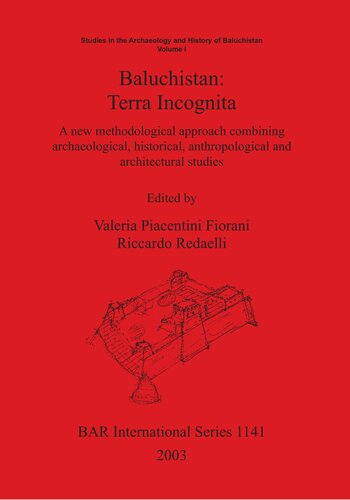

Most ebook files are in PDF format, so you can easily read them using various software such as Foxit Reader or directly on the Google Chrome browser.
Some ebook files are released by publishers in other formats such as .awz, .mobi, .epub, .fb2, etc. You may need to install specific software to read these formats on mobile/PC, such as Calibre.
Please read the tutorial at this link: https://ebookbell.com/faq
We offer FREE conversion to the popular formats you request; however, this may take some time. Therefore, right after payment, please email us, and we will try to provide the service as quickly as possible.
For some exceptional file formats or broken links (if any), please refrain from opening any disputes. Instead, email us first, and we will try to assist within a maximum of 6 hours.
EbookBell Team

4.0
26 reviewsThis volume is the first in a series that will ultimately provide a thorough archaeological and historical survey of Baluchistan, a vast region that, as recently as the Eighties of the nineteenth century, the Oxford Atlas for Pakistan still marked as terra incognita, its population still retaining an equivocal reputation for inhospitality and cruelty, thus explaining the very scanty attention Baluchistan received in works dealing with British India, "Partition", Pakistan and its borderlands towards Iran as well as "the obscurity that - in Lord Curzon's words - has rarely lifted from these regions". The ten contributors to this first volume begin the series by considering the data provided by literature and tradition in relation to archaeology and its solid evidence and chronologies. Field work is complemented with a comprehensive investigation through the literary sources, that is to underpin the study of material and human evidence with a systematic study of the available literature, in both eastern and western languages, printed and manuscript: the starting point were the sources in Arabic referring to Parthian, Sasanian and early Islamic times, and from there the authors investigate all literature focused on "mediaeval" periods up to Europe's appearance on this eastern stage. Work in the anthropological and ethno-anthropological sectors has advanced the study of the current settlements through the analysis of their organization, ever dependent on the water factor, a vital element and source of wealth in this arid, desolate and decidedly inhospitable desert - pre-desert environment. A final section considers monuments, and remains of a past that is rapidly vanishing. The result is a reconstruction of Baluchistan's history in more than purely political - dynastic terms, and an outline of specific phases and periods concerning its life in all its various aspects and components.